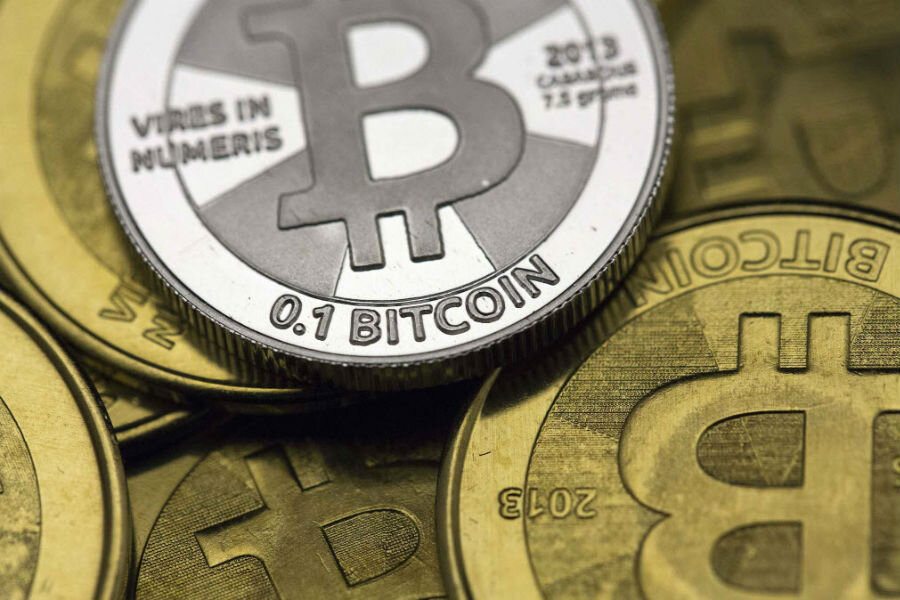How bitcoin's 'blockchain' could transform banking, voting, and data
Loading...
When most people think of bitcoin, they imagine it being used either by people who are extremely tech-savvy, or by criminals.
Because bitcoin allows purchases to be made anonymously, it’s easy to picture the currency being used for shadowy transactions across country lines. But while there’s no question that bitcoin has played a role in enabling online grey or black markets, the technology behind it – the blockchain – could transform the way we handle everyday transactions, from finance to medicine to voting.
At its heart, the blockchain is a way of ensuring that everyone agrees about events taking place. Rather than relying on a central bank to watch while digital money changes hands, blockchain code records each bitcoin transaction that takes place and enters it in a virtual ledger. Different computers, scattered around the globe and with no special relationship to one another, run a mathematical operation to ensure that the transactions are done correctly. If they all agree, that transaction is recorded in the current block in the virtual ledger.
To falsify a bitcoin transaction, someone would have to break blockchain cryptography in such a way that more than half the computers arrive at the same incorrect answer, at the same time – an impossible task. That means that there’s distributed consensus, or a transparent public record of bitcoin transactions that everyone agrees took place. Each block in the ledger contains a bit of code linking it to the one before it, creating a chain stretching all the way back to the very first bitcoin transaction.
This is very different from the way computer systems have traditionally handled issues of trust and verification. If you make a withdrawal from your checking account, your bank’s central server checks your balance and subtracts the correct amount. There’s a risk that that server could make a mistake due to a misconfiguration. Or that the information it holds could be leaked. Or that it could be hacked, causing the data representing your money to fall into someone else’s hands.
In 2015, a group of financial institutions began investigating the blockchain as a better way of keeping data safe online. Because it relies on many separate nodes rather than one central server, the blockchain can’t be compromised, and as an added layer of security, it allows people to make transactions without disclosing who they are or what they’re buying or selling. In September, Barclays, UBS, J. P. Morgan, and other banks partnered with R3, a financial technology company, to establish standards for a public ledger using blockchain technology.
In February, IBM announced a set of tools designed to let financial, logistics, and other companies use blockchain technology. Imagine a shipping company that outfits its fleet with sensors to record time, temperature, location, and other data. That information could be written to the public ledger at regular intervals, making it easy for customers to see whether items are being shipped on time and under acceptable conditions. Storing that information in a transparent blockchain, rather than on one company's server, lets everyone see that the record hasn't been tampered with or compromised. In essence, the blockchain establishes a real-time consensus on what's happening.
In the future, the blockchain could also be used to store ownership documents, voting records, and even medical information (remember, the record of transactions doesn’t include personally identifiable information). The technology isn’t quite ready yet – for example, banks haven’t decided whether they will use bitcoin’s blockchain or another framework based on the same code – but as it matures, it could allow for an unalterable, unhackable record of past and current events that everyone can agree on.
While bitcoin may or may not survive as a currency, the blockchain is already starting to transform the way data is handled – and is, in the process, making customers and companies alike more secure.






